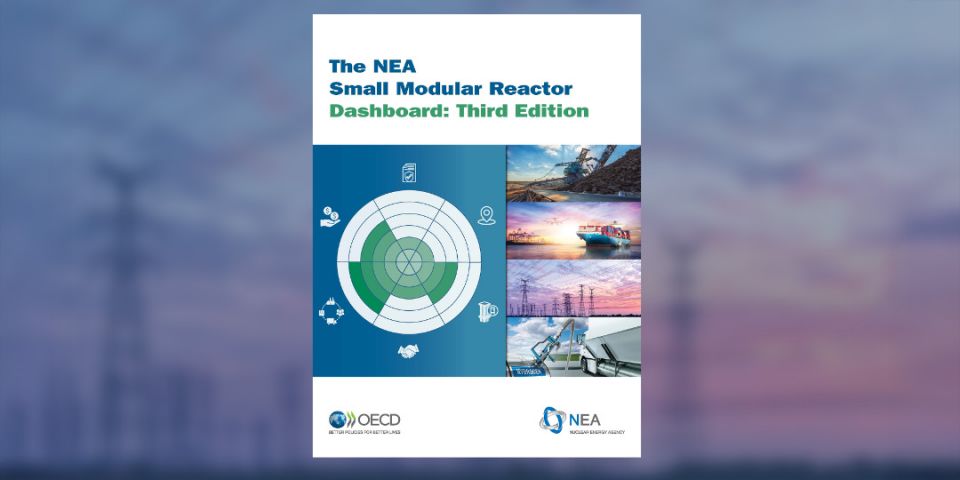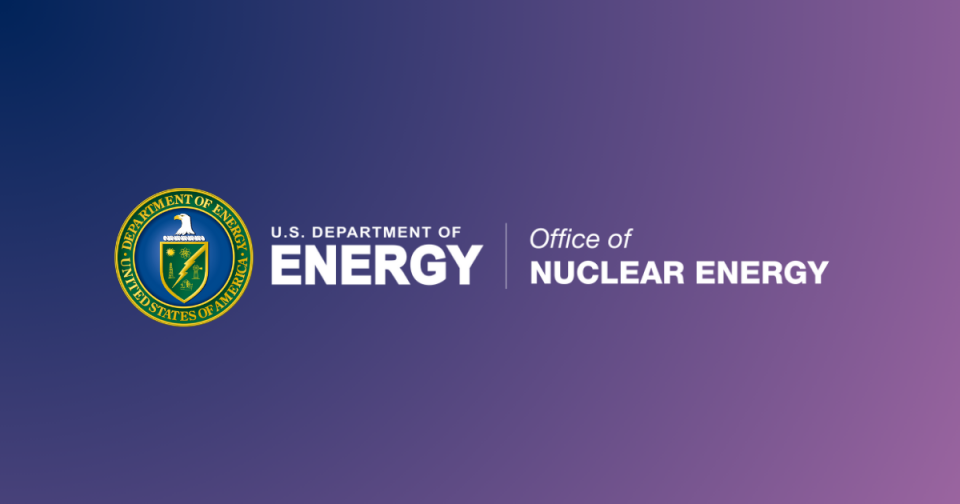ANS President Joe Colvin testifies about SMR legislation
On Tuesday, June 7, ANS President Joe Colvin testified about legislation pertaining to Small Modular Reactors (SMRs) before the U.S. Senate Energy & Natural Resources Committee. The committee hearing began at 10:00 am Eastern Time. A live Webcast was available via the committee's Web site (see "Live Webcast" on the left menu). An archive video will be available shortly after the hearing is complete.
The purpose of this hearing was to receive testimony on the following legislation:
- S. 512, the Nuclear Power 2021 Act
- S. 937, the American Alternative Fuels Act of 2011
- S. 1067, a bill to amend the Energy Policy Act of 2005 to require the Secretary of Energy to carry out a research and development and demonstration program to reduce manufacturing and construction costs relating to nuclear reactors, and for other purposes
The hearing included testimony by two panels of witnesses (shown below). Witness testimony was available on the Web site linked above at the start of the hearing.
Panel 1
John E. Kelly, deputy assistant secretary for Nuclear Reactor Technologies, U.S. Department of Energy
Steven G. Chalk, deputy assistant secretary, U.S. Department of Energy
Panel 2
Edwin Lyman, senior scientist, Union of Concerned Scientists
Joe Colvin, president, American Nuclear Society
James T. Bartis, senior policy researcher, RAND Corporation
Brian Siu, policy analyst, Natural Resources Defense Council
____________________________________________________
TESTIMONY OF
Joe Colvin
President
American Nuclear Society
BEFORE THE
COMMITTEE ON ENERGY AND NATURAL RESOURCES
UNITED STATES SENATE
June 7, 2011
Thank you, Chairman Bingaman and members of the committee for the opportunity to testify before the committee today. I am here in my capacity as president of the American Nuclear Society (ANS), the premier U.S. professional society dedicated to promoting the beneficial uses of nuclear science and technology. The ANS has roughly 11,000 national members and another 10,000 plus members of 51 local sections spread across 38 states. We also have 38 student sections at major U.S. universities and 11 international sections in other countries. Our members span the nuclear enterprise, including utilities, national laboratories, government and state agencies, industrial vendors and suppliers, universities, and medicine.
ANS members have been involved with small reactors for almost the entire 55 year history of the organization, including the Experimental Breeder Reactor (EBR-1), the first reactor to produce electricity in 1951, and the 10-MW USS Nautilus reactor-the original SMR-which paved the way for the nuclear Navy and today's commercial water-cooled reactor fleet.
More recently, through its Special Committee on SMR Generic Licensing Issues, the ANS has worked with experts in the U.S. nuclear industry, universities, national laboratories, and government agencies to identify key regulatory impediments in the areas of licensing, risk informed regulation, physical security, and staffing requirements, which could hinder timely deployment of a new generation of SMRs, and offered consensus solutions to address them.
My testimony today will focus on three main points:
- SMRs have great potential to contribute to U.S. energy, economic, and national security.
- S. 512, the Nuclear Power 2021 Act is an important step toward the near-term deployment of U.S. SMR technology.
- There are other SMR-related technical and regulatory challenges that need to be addressed by the federal government.
1. The Potential of Small Modular Reactors
The ANS and its membership believe that the development of a new generation of small modular reactors has the potential to make a significant contribution to our long-term energy, economic, and national security. SMRs offer several unique advantages over their larger brethren.
First, they provide great operational flexibility. SMRs can be deployed in arid regions to produce large quantities of fresh water through desalination. They can be used as a heat source for industrial processes, including hydrogen production, fertilizers, and production of synthetic fuels and biofuels. They can be deployed in remote areas to produce energy for towns and military installations, as well as heat for mining operations and unconventional oil recovery. SMRs could be an attractive alternative for smaller U.S. utilities, especially in the Midwest, that seek to replace their old, coal-fired generating stations because of environmental considerations. These facilities would already have the necessary water, rail, and transmission facilities and the necessary infrastructure, thereby simplifying the installation process.
Second, new SMR designs employ the latest generation suite of safety features. Obviously, we are all saddened by the Japanese earthquake and tsunami and its impact on the Fukushima Daiichi nuclear power plant. In the wake of these events, we must reiterate our commitment to maintaining the highest levels of safety.
Frankly, in my view, the best way to improve long-term nuclear safety is to hasten deployment of a new generation of reactors that have advanced safety systems. New SMR designs employ features such as underground containment structures that can be filled with water to provide indefinite decay heat removal without external power or diesel generators; "integral" designs" that place steam generators and pressurizers within the reactor pressure vessel, thereby eliminating the threat of primary coolant loop ruptures; and extensive use of natural phenomena such as convection and conduction in place of pumps, valves, and pipes.
Third, there is a national security aspect to the development of U.S. SMR technology that must be considered. Beyond the U.S., over 60 countries have expressed interest in developing new nuclear energy generation capacity. While some of these countries already have existing nuclear plants, others would be new entrants, many of whom are from the developing world which do not have electrical grids that can absorb a 1-GW nuclear plant in their current configuration.
While U.S. nuclear technology is still considered to be the gold standard in safety and reliability throughout the world, the nuclear supply infrastructure has become thoroughly internationalized in the last three decades. If the U.S. is unable or unwilling to develop SMR technology that can be exported internationally as well as used domestically, there are several nations that are prepared to meet the growing global demand. I believe it is clearly preferable to have active U.S. involvement in the global nuclear marketplace, rather than ceding the territory to non-U.S. suppliers that may not always share our approach toward safety and nonproliferation.
2. S. 512 the Nuclear Power 2021 Act
As a 501(c)(3) not-for-profit organization, the ANS does not normally endorse congressional legislation. However, I can say confidently that S. 512, The Nuclear Power 2021 Act, represents a strong foundational effort to augment the federal government's role in U.S. SMR development. It would provide the U.S. Department of Energy with the authority to enter into public-private partnerships to develop and license small modular reactors. We believe this would significantly accelerate U.S. SMR reactor development in a manner that furthers U.S. environmental, foreign-policy, and economic objectives. This legislation builds on the proven success of the Nuclear Power 2010 program, which expedited the design and licensing activities of the Westinghouse AP 1000 and GEH ESBWR reactors, enabled the submission of over 15 combine construction permit and operating license applications for Nuclear Regulatory Commission review, while attracting billions in private investment in creating tens of thousands of jobs.
3. Other challenges to SMR development/deployment
The ANS encourages Congress to consider other aspects of SMR development. These include accelerating the development of SMR-related codes and standards; updates to U.S. laws and regulations that would facilitate accelerated maturation and transfer of SMR-relevant technology from the national laboratories to U.S. industry and regulators; streamlining export control laws to minimize the incentives to "off-shore" SMR component manufacturing; and integration of university-based U.S. nuclear science and engineering education programs with SMR development efforts to ensure we have technically skilled workforce to design, deploy, and operate these reactors in the future.
Furthermore, I strongly encourage the NRC to move forward with alacrity in addressing the outstanding generic licensing and regulatory issues, including instrumentation and control, required staffing levels, unique design features, enabling construction activities during operations, and security requirements.
In closing, I would like to offer the following observation: It is critically important that the U.S. transition to a stable long-term energy policy that emphasizes reliability, affordability, predictability-in-pricing, diversity of supply, and well-paying domestic job growth. Under any conceivable scenario, nuclear energy will be an indispensable component of our energy future, and SMR technology will likely play an increasingly important role.







